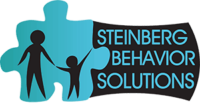 The desire for independence is within each one of us. All of us, at some point in our lives, (whether we were 5 years old or 55 years old) have said, “I want to do it myself!” or “I don’t need help!” Independence gives us a sense of purpose, accomplishment, and pride. The movement towards independence, in daily living skills, is a typical developmental milestone for children. A child will go from crying every time they are hungry, to waddling towards the refrigerator, to trying to get her own drink. This is a skill that usually flies under the radar, being that it happens so naturally for typically developing children.
The desire for independence is within each one of us. All of us, at some point in our lives, (whether we were 5 years old or 55 years old) have said, “I want to do it myself!” or “I don’t need help!” Independence gives us a sense of purpose, accomplishment, and pride. The movement towards independence, in daily living skills, is a typical developmental milestone for children. A child will go from crying every time they are hungry, to waddling towards the refrigerator, to trying to get her own drink. This is a skill that usually flies under the radar, being that it happens so naturally for typically developing children.
If you are reading this blog, it is likely that you have a child with Autism in your life. For individuals with Autism, independence does not come quite as naturally as it did for you and me. It is often times a skill that must be taught. Children with Autism typically need help gaining independence in daily living skills, such as bathing, toileting, dressing, eating, washing hands, and brushing teeth. Of course, there are many more areas where independence is important, but these are some of the early daily living skills that are important for a child to learn. To help your child with Autism gain and maintain independence, try the following:
1) Create a visual schedule of the steps of the task for your child (Click here for some examples from one of our download-able charts page). For example, if you are attempting to increase your child’s independence in showering make a picture schedule that shows turning the water on, standing under the water, getting soap, etc. This schedule should be laminated and placed on the wall of the shower in your child’s line of vision. At first, it will be necessary to prompt your child through the entire process, but with prompt fading your child will learn to use the schedule as a prompt, whether you are in the bathroom with him or not!
2) Fade your prompts. If your child is really struggling with showering on his own, you may first need to prompt him to shower by using full physical, or hand over hand prompting. In this case, you will need to walk you child through every step, by placing your hands on his and guiding him through the task. Eventually, your child will begin to learn what he should do. You will then need to begin fading your prompts. The following is a guide to help you fade your prompts from most to least restrictive:
Full physical prompt (most intrusive) – Gently guide your child’s hands through the entire showering process.
Partial physical prompt – You may touch your child’s elbow in an attempt to get her to reach for the shampoo.
Verbal prompt – You say, “Wash your hair” and the child picks up the soap and washes her hair.
Model prompt– You say, “Do this!” and rub your hands on your head like you are washing your hair. If your child is at this level in the hierarchy she should follow your lead.
Gestural prompt – Point to the shampoo bottle when it is time for your child to wash her hair.
Visual prompt (least intrusive) – If you have a picture schedule, this would serve as your visual prompt and you can reference it if your child gets “stuck” on a step.
3) As hard as it may be, stay consistent, patient, and do not do things for your child that he do himself! Is it seemingly quicker, easier and more convenient to do it for him? Of course it is. But your child needs to practice his skills over and over in order to be able to complete them independently. It is hard now, but it will pay off!
4) Lastly, and most importantly, give your child lots of verbal praise, hugs, high fives, or whatever they love for completing small steps or entire tasks independently. Celebrate the small victories as they lead to enormous gains. These skills are extremely difficult for children with Autism and it is important that they are encouraged along their journey to independence!
